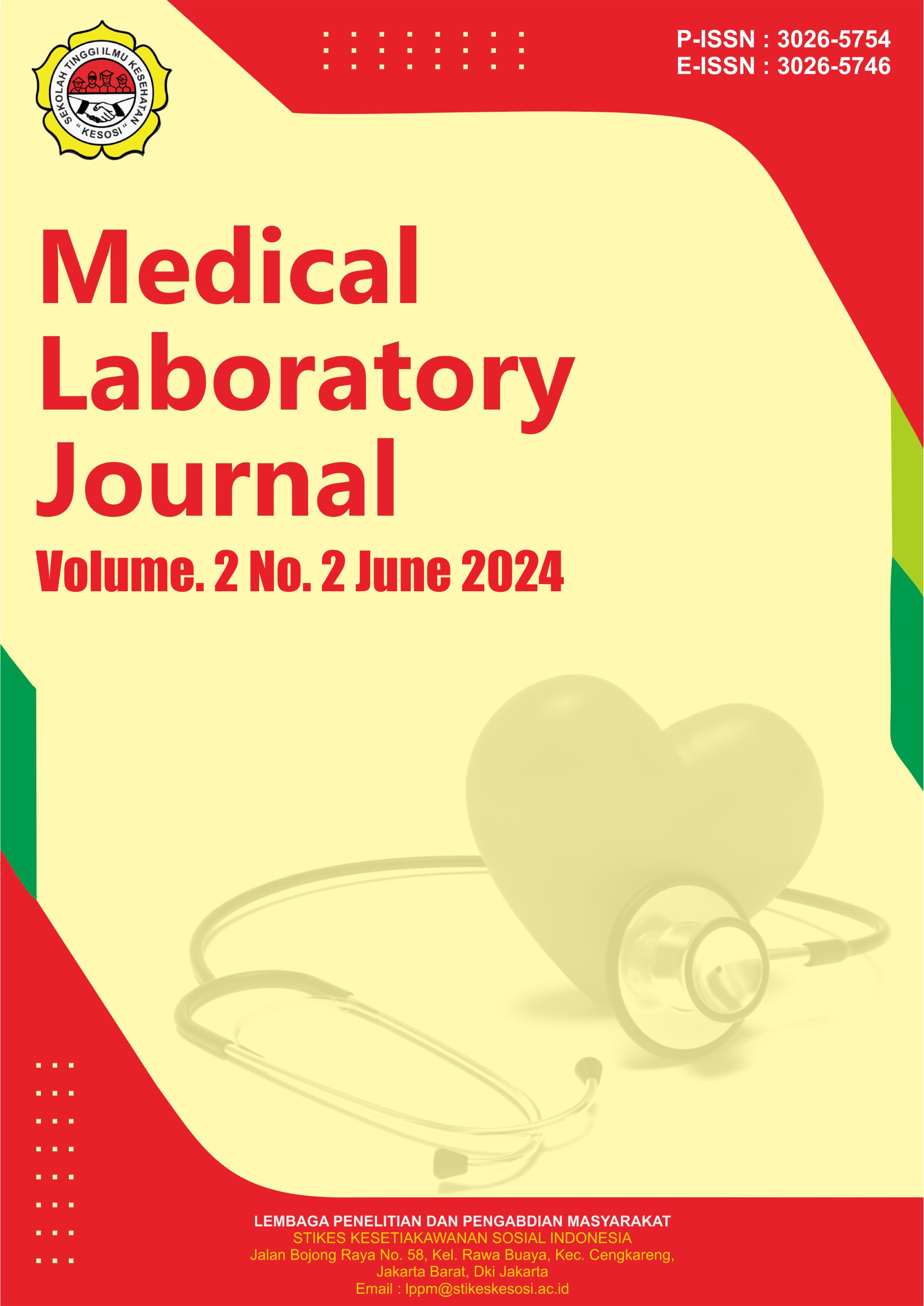Survei Kepadatan dan Identifikasi Jentik Nyamuk Aedes Aegypti Sebagai Vektor RT 005 Pesisir Pantai Wailela Desa Rumah Tiga Kecamatan Teluk Ambon
DOI:
https://doi.org/10.57213/caloryjournal.v2i2.286Keywords:
Aedes aegypti, Ambon Bay, Dengue Hemorrhagic Fever (DHF)Abstract
Aedes aegypti mosquito is the cause of Dengue Hemorrhagic Fever (DHF) which can cause outbreaks and result in high vector development due to uncontrolled vector development. To determine the density and identification of Aedes aeygpti mosquito larvae as vectors RT 005 RW 014 Wailela coastal environment, Rumah Tiga Village, Teluk Ambon District, Descriptive survey research using the cross sectonal method. This research was carried out in the coastal area of RT 005 RW 014 Rumah Tiga Village, Teluk District. In this study, the population taken was 48 houses located in the coastal area of RT 005 RW 014 Rumah Tiga Village, Teluk Ambon District. The variables of this study used larval indices (house index, container index, breteauIndex). The results of the study showed that the assessment of House Index (HI) = 97% Container Index (CI) = 46% and Breteu Index (BI) = 308% with DF= which showed that the density of larvae in the coastal area of RT 005 RW 014 Rumah Tiga Village was quite high and the risk of transmission was also high. Based on the results of the survey, Aedes aegypti mosquito larvae are more commonly found in dispensers and flower pots compared to other types of containers. According to the results of a research survey conducted on the Aedes aegypti mosquito larvae survey in the coastal area of RT 005 RW 014 Rumah Tiga Village, Teluk Ambon District in 2024, the following conclusions were obtained: From the House Index (HI) inspection, 97% of the 46 houses inspected, from the Co M. Interner Index (CI) inspection, 46% positive of the 46 houses inspected, From the Breteu Index (BI) inspection, 308% of the 47 houses inspected.
References
Wulan, S., et al. (2018). Uji efektivitas larvasida ekstrak daun mahkota dewa (Phaleria macrocarpa) terhadap larva nyamuk Aedes aegypti instar III. Jurnal Ilmiah Kedokteran, 5(3), 1–11. Available at: http://jurnal.untad.ac
World Health Organization. (2020). Vector surveillance and control. Available at: https://www.who.int/denguecontol/monitoring/vector_surveillance/en/
World Health Organization. (2009). Dengue: Guidelines for diagnosis, treatment, prevention, and control. In Special Programme for Research and Training in Tropical Diseases (New Ed). WHO Press.
Taslisia, T., & Rusjdi, S. R. (2018). Maya index, dan status kerentanan larva nyamuk Aedes aegypti terhadap tememhos. Artikel Penelitian Survei Entomologi, 7(1), 33–41.
Tarigan, J. C. (2021). Survei jentik nyamuk dan identifikasi jentik nyamuk Aedes aegypti di Desa Indokum Siroga Kecamatan Simpang Empat Kabupaten Karo Tahun 2021. Politeknik Kesehatan Kemenkes RI Medan.
Sitorus, H., et al. (2021). Pengaruh salinitas terhadap perkembangan stadium akuatik Aedes aegypti di laboratorium. Spirakel, 13(2), 62–69. https://doi.org/10.22435/5673
Prasetyowati, H., & Ginanjar, A. (2017). Maya indeks dan kepadatan larva Aedes aegypti di daerah endemis DBD Jakarta Timur. Vektora, 9(1), 43–49. Available at: https://media.neliti.com
Napitupulu, M. (2021). Pengaruh insektisida Malathion 5% terhadap resistensi nyamuk dewasa Aedes aegypti: Systematic review. Politeknik Kesehatan Kemenkes Medan.
Munte, S. U. L. (2021). Pemanfaatan masurasi bawang putih (Allivium sativum) dalam membunuh larva nyamuk Aedes aegypti. Politeknik Kesehatan Kemenkes RI Medan.
Maharani, A., Mulyani, S., & Rubaya, A. K. (2021). Ekstrak daun salam (Syzygium polyanthum) dalam lilin padat sebagai repellent nyamuk Aedes sp., 1–9.
Lema, Y. N., Almet, J., & Wuri, D. A. (2021). Gambaran siklus hidup nyamuk Aedes sp. di Kota Kupang. Jurnal Veteriner Nusantara, 4(1), 1–13. Available at: http://ejurnal.undana.ac.id/jvn
Khairunisa, et al. (2017). Kepadatan jentik nyamuk Aedes sp. (House Index) sebagai indikator survailens vektor demam berdarah dengue di kota Semarang. Jurnal Kesehatan Masyarakat, 5(5), Oktober 2017.
Kemenkes. (2020). Profil Kesehatan Indonesia 2019.
Isra, J. M. (2018). Efektivitas ekstrak biji pepaya (Carica papaya linnaeus) sebagai larvasida pada larva Aedes aegypti instar III. Ruwa Jurai, 12(1), 31–36.
Hajrah Rasyid S, W. O. R. (2020). Peran Kader Jumantik dan Perilaku Masyarakat 90 dalam Pemberantasan Sarang Nyamuk (PSN) DBD di Kelurahan Bakung Kecamatan Biringkanaya Kota Makasar. Universitas Hasanuddin.
Departemen Kesehatan Republik Indonesia. (2017). Peraturan Menteri Kesehatan Republik Indonesia Nomor 50 Tahun 2017 tentang Standar Baku Mutu Kesehatan Lingkungan dan Persyaratan Kesehatan untuk Vektor dan Binatang Pembawa Penyakit serta Pengendaliannya.
Centers for Disease Control and Prevention (CDC). (2020). Life cycle: Aedes aegypti. Centers for Disease Control and Prevention, p. 2.
Addiniyah, N. R. (2019). Tingkat toksisitas Bacillus thuringiensis koleksi Balai Besar Penelitian dan Pengembangan Vektor dan Reservoir Penyakit (B2P2VRP) Salatiga dan Isolat Surabaya terhadap berbagai Stadium larva Aedes Aegypti. Universitas Islam Negeri Sunan Ampel. Available at: http://digilib.uinsby.ac.id/id/eprint/38698
Downloads
Published
Issue
Section
License
Copyright (c) 2024 Calory Journal : Medical Laboratory Journal

This work is licensed under a Creative Commons Attribution-ShareAlike 4.0 International License.






